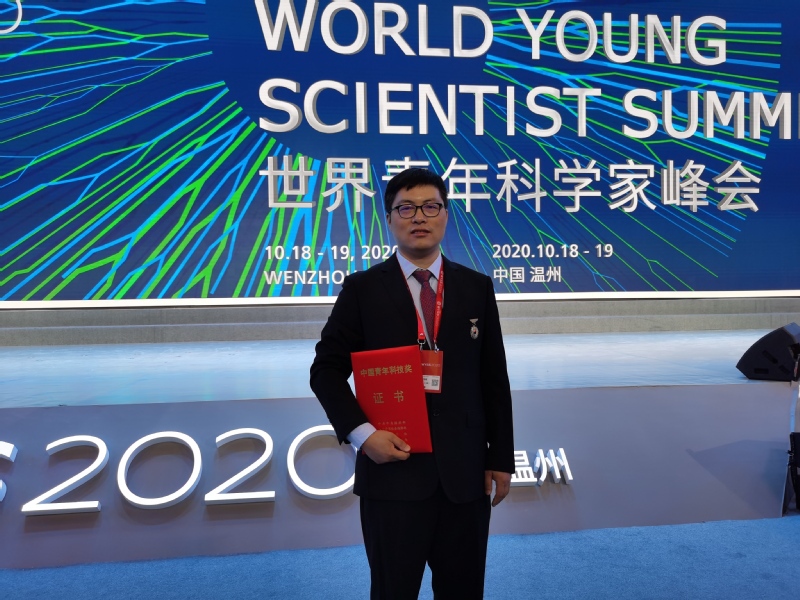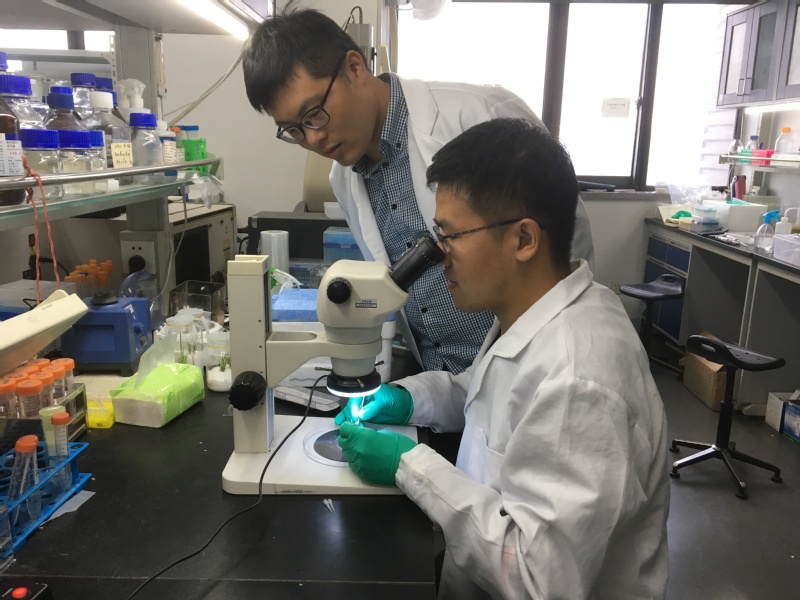Green control of rice pests from insect wing morphs
Insects are the largest and most diverse species of organisms on the earth. They are the only species of invertebrates that can fly. However, insects are marked by their remarkable plasticity. Most of them have one or two pairs of wings, but under special circumstances, siblings may even develop two or several different wing morphs.
Planthoppers are a typical insect with wing morphism. Prof. XU Haijun from the Zhejiang University College of Agriculture and Biotechnology has committed himself to unraveling the enigma of short-winged and long-winged planthoppers in the past decade. He led his team to discover two insulin receptors which can regulate the development of short or long wings in planthoppers and propose the insulin signaling pathway which serves as an ideal model for studying wing developmental plasticity in insects. Recently, XU Haijun won the 16th China Youth Science and Technology Award thanks to his outstanding contributions to the field of science in China.

The journey to precision control of planthoppers
Wing-morph differentiation refers to the selective development of larvae into winged, wingless or short-winged adults. Long-winged individuals are able to fly and spread to new food sources in harsh environments. Short-winged or wingless individuals lack the ability to fly, but they possess a high reproduction rate, which facilitates the expeditious proliferation of the colony in localized areas. Hence, the biological feature of wing-morph differentiation is one of the underlying reasons for the ecological success of these insects.
Planthoppers are major pests in rice regions in Asia, and their larvae can selectively develop into long-winged or short-winged adults depending on their growing conditions. Statistics from the National Agro-Tech Extension and Service Center reveal that 80% of China’s rice paddies are affected by planthoppers, causing a loss of 10-20% of the total rice yield and an annual economic loss of more than 10 billion yuan. As a consequence, they are seriously jeopardizing China’s food security.
Planthoppers in China’s rice paddies are primarily from Southeast Asia because long-winged differentiation gives them the ability to migrate long distances. “We find that the worse the external environment is, the more long-winged planthoppers there will be,” said XU Haijun.
The scientific community has been baffled by the question as to what factors contribute to the diverse wing morphs of insects for more than half a century.
Since 2011, XU Haijun has conducting his research on the mechanism of rice pests and the evolutionary developmental biology. “Science is in essence to solve problems, and it is curiosity that acts as a strong motivator” said XU Haijun.

The research process is like cracking a detective case
The development of wings involves the growth of muscles, so XU Haijun oriented his research toward how energy transports plasticity. “It’s like building blocks. You have the same materials, but you can create a myriad of arrangements.”
“Doing scientific research can be compared to solving a crime in that a detective needs to find the answer from hidden clues whereas a researcher needs to read massive literature,” said XU Haijun, “In scientific research, thumbing through piles of literature is a number one priority. Researchers can do further thinking from previous studies and their own observations, which can thus lead to reasoning about possible causes and facilitate experiments.”
XU Haijun found that the deterioration of the environment would produce a direct impact on the nutrition of planthoppers, so he posited that the length of their wings might be bound up with nutritional regulation. After a succession of experiments, he eventually focused on the insulin pathway.
He discovered that the activity of two insulin receptors (InR1 and InR2) plays a vital role in the differentiation of wing morphs and thus proposed an original network model for the insulin signaling pathway to regulate wing differentiation. This research represents a milestone in the study of the molecular mechanism of wing polymorphism and complements the theoretical flaw in evolutionary developmental biology. It is thus of immense significance for precision control of planthoppers.
The research on developmental evolution doesn’t stop here, and XU Haijun will constitute to lead his team to explore. “Insulin receptors are merely soldiers who take orders. We have to find the ‘commander-in-chief’ of this mechanism and really crack this hard nut in the scientific community”, said XU Haijun.